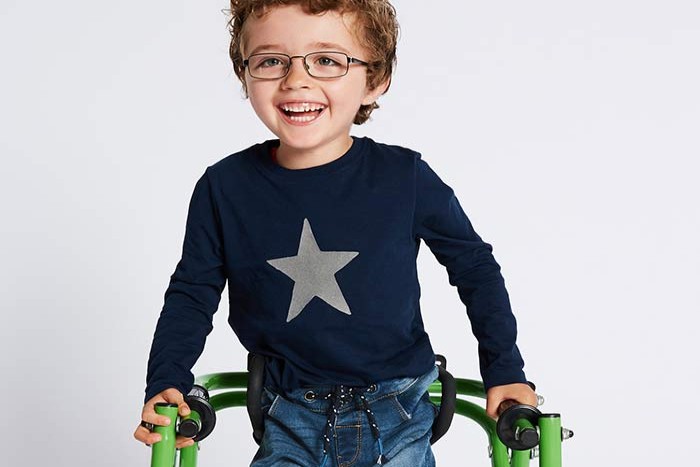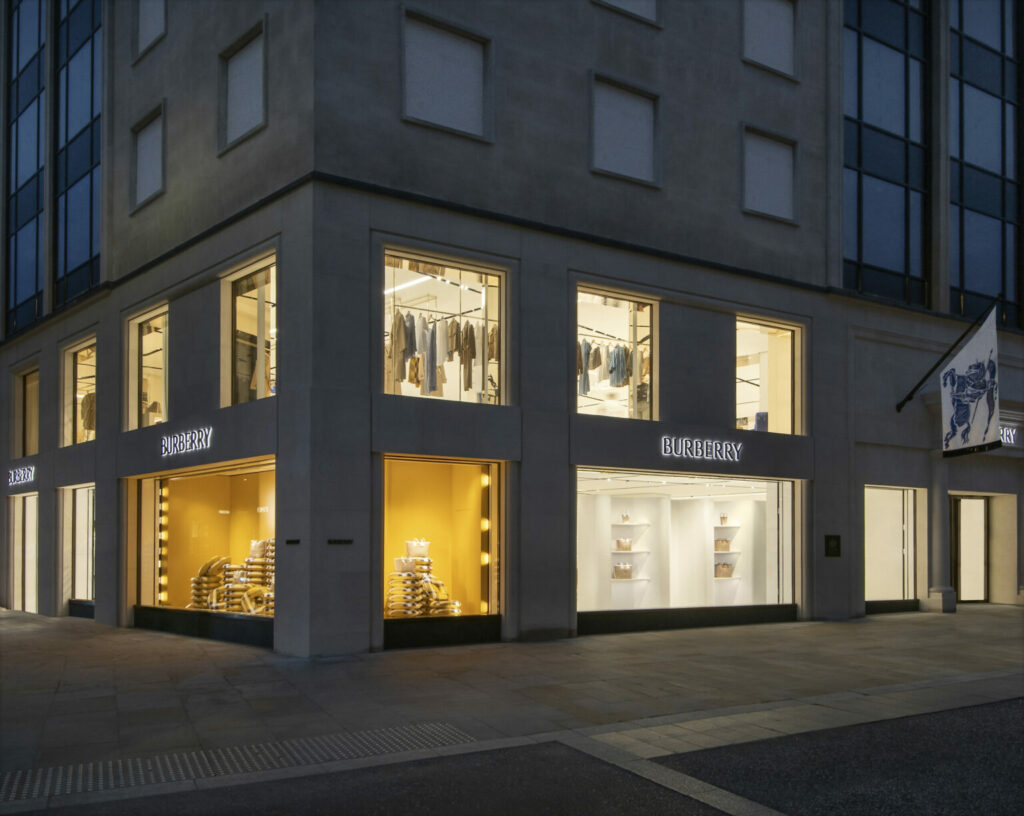The spending power of disabled people and their household is currently estimated to be worth £249 billion per year to UK retailers, according to Purple – a disability organisation championing accessible shopping.
Purple’s 2019 survey also found that UK retailers were losing millions of pounds in annual revenue by not catering to its disabled consumers. The organisation also said that there are more than 13 million people in the UK that live with a disability and nearly a third of them spend money with retailers every week. The poll suggested that people who considered themselves disabled revealed spent on average £163 on shopping per month.
Meanwhile, the Covid-19 pandemic also presented further challenges for people with disabilities when it came to shopping with a retailer.
Last year, the Equality and Human Rights Commission wrote in an open letter to the BRC highlighting concerns that a large number of disabled people in the UK, who fall outside the government’s high risk groups, were facing additional barriers to essential shopping during the Covid-19 lockdowns.
The commission reviewed over 300 claims against major supermarkets, collated by Fry Law, for failure to consider the needs of disabled people and make adjustments to allow people to shop for essentials.
Claims included a wheelchair user who was refused support in reaching items placed on high shelves; and visually impaired customers who have been refused the support of a sighted guide. Other common issues included inaccessible websites and long-queues which caused problems for people with mobility issues and chronic pain conditions.

The “Purple Pound” is a relatively untapped market, something that retailers could strive to address and capitalise on.
Fashion retailers may be quick to bring in new trends, but they have arguably been slow to accommodate the needs of disabled consumers.
A 2020 survey by Fair Play Talks found that 73 per cent of people aged 18-34 were likely to make an immediate purchase from a brand with inclusive advertising, compared to 65 per cent of people aged 35–54, and 61 per cent of people over age 55.
Over the last year, the Covid-19 pandemic has presented many challenges but also brought opportunities that have helped shape the future of retail and ecommerce. Among these trends, there has been a call for retailers to embrace diversity and inclusivity, both in stores and online.
Some retailers have already ventured into a more inclusive direction over the past few years. In 2018, Marks & Spencer, Tommy Hilfiger, River Island and Asos made changes in their advertising campaigns.
Tommy Hilfiger came out with clothes featuring one-handed zips, extended openings, adjustable waists and magnetic closures, while Asos teamed up with GB Paralympic hopeful Chloe Ball-Hopkins to create a “fashionable yet practical” jumpsuit that could be worn by everyone, whether they are in a wheelchair or not.
During that year, River Island launched its pro-diversity campaign, “Labels are for clothes”, which featured models of different genders, sexualities, ethnicities, religions, sizes and disabilities.
Marking its 30th anniversary, the retailer kick-started the campaign featuring six children with conditions including Down’s syndrome, cerebral palsy and eyesight issues as the new faces of the campaign.
Then, in the following October, Superdry unveiled a disabled mannequin shop window on London’s Regent Street as part of the brand’s partnership with Team UK for Prince Harry’s The Invictus Games. The mannequins were dressed in specially designed kits for the team.
While there are no immediate plans to launch a consumer range, Superdry said it would continue to review how best to serve its customers and reflect diversity within campaigns going forward.
A Superdry spokesperson told Retail Gazette that the retailer was “proud to have supported the Invictus Games in 2018 and this support will continue with the Games in The Hague next year, which were rescheduled from 2020”.
“We continue to be inspired by the accomplishments and courage of all the athletes involved,” they said.
Meanwhile, Asos said it has been working with ParalympicsGB since 2015, supplying ceremony and formalwear for the 2016 and 2018 Paralympic Games, and for the 2020 Tokyo Paralympics happening this month.
The online fashion retailer said it would continuing the partnership by working with the team in helping retail teams understand the technicality involved in creating adaptive garments that are more inclusive of physical disabilities. Asos said it could use this knowledge in designing products for customers too.
Earlier this year, Asos launched a new internal diversity and inclusion strategy, “All In”, with a focus on representation and culture, designed to drive inclusion for all. An Asos spokesperson told Retail Gazette that firm takes “an inclusive approach to help young people look, feel and be their best”.
“We’re dedicated to driving disability inclusion across every aspect of our business, from how we recruit and support our people, to the models and influencers we select, and the accessibility of our app and website,” the spokesperson said.
“Our purpose is to give customers the confidence to be whoever they want to be – and that goes for our ‘Asosers’ too.
“A key part of this is ensuring our commitment to diversity, equity and inclusion remains high on our agenda both now and in the future.”
M&S is emerging as a retailer known for featuring models with physical disabilities on its social media channels. The high street stalwart, which recently announced it would introduce a same-day delivery service for clothing orders to compete with Asos, calls itself a “UK market leader in clothing”.
“1 in 5 people have a disability, so this needs to be factored into marketing across all channels”
M&S head of brand marketing Vanessa Logan told Retail Gazette that the retailer has a “responsibility” to sell products that make customers “feel great and look great”.
“Part of that means marketing them in a way that reflects the diversity of our 22 million customers,” she said.
“Most recently we’ve had great feedback on our new neutrals lingerie range which features fantastic models all with unique styles, talents, and stories who all share our passion for showing beauty in different shapes, styles, sizes, and colours.
“One in five people have a disability, so of course this needs to be factored into our marketing across all channels – and it’s something we continue to improve on, for example we have some exciting plans for even more inclusive imagery on Instagram this autumn.
“One area where we’re particularly proud of our authentic inclusive approach is kidswear.
“We have a long-standing relationship with a range of great agencies including specialist talent agency Zebedee Management. The team at Zebedee are passionate about redefining the perception of beauty, disability and inclusion and you can see a number of their models in our current Back to School range.
“This inclusive approach is particularly important given our adapted product offer – in 2016 we launched the high street’s first adapted kidswear offer across uniform, with daywear following in 2018.
“These products are all about comfort & value and over the years we’ve worked with expert partners, as well as listening carefully to our customers’ feedback to improve the ranges.”
M&S also said it was the first retailer to introduce the sunflower lanyards, indicating non-visible disabilities, as well as mandatory training on how to welcome and support customers and their assistance dogs, which has been rolled out across our stores network.
“Our approach to inclusivity of course stretches beyond how we market our products and ensuring our stores and website are both accessible is very important,” Logan said.
“As an employer, we build in accessibility into everything we do, including recruitment where we partner with organisations such as Evenbreak – a highly regarded jobs board which actively seeks to hire those with a disability and ensure that they are not excluded from the workplace.
“M&S was one of the initial signatories to the 2019 Valuable 500 and we are a Level 2 Disability Confident Employer, working towards achieving Level 3.”
Under British law, retailers must ensure that disabled customers can access their services in the same way, or as close as possible to the same way, as customers without a disability.
Hiring models with physical disabilities might be a step forward for retailers in allowing more customers to feel represented, but this initiative may appear as tokenistic if retailers fail to introduce other schemes alongside it.
Retailers may need to conduct a full accessibility audit on their ecommerce and in-store channels, particularly in the wake of Covid-19, as well as staff-wide diversity and inclusion policies and schemes.
Companies would also benefit from signing up to the government’s Disability Confident scheme to become a Disability Confident Employer, while also launching an internal Diversity & Inclusion strategy.
Click here to sign up to Retail Gazette‘s free daily email newsletter

















